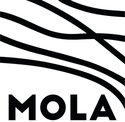Assessment of archaeological resource in aggregate areas in the London borough of Havering
Museum of London Archaeology, 2011. https://doi.org/10.5284/1000395. How to cite using this DOI
Data copyright © Museum of London Archaeology, Havering Council unless otherwise stated
This work is licensed under the ADS Terms of Use and Access.
Primary contact
Iris
Rodenbuesch
Senior Archaeologist
Museum of London Archaeology
Mortimer Wheeler House
46 Eagle Wharf Road
London
N1 7ED
UK
Tel: 020 7566 9353
Fax: 020 7410 2201
Resource identifiers
- ADS Collection: 1071
- ALSF Project Number: 5849
- DOI:https://doi.org/10.5284/1000395
- How to cite using this DOI
Overview
The assessment focussed on four selected Study Areas within Havering and tried to make a correlation between potentially commercially valuable aggregates and zones of past human activity. Areas of past, present and potential future extraction were identified from British Geological Survey (BGS) mapping, historic Ordnance Survey (OS) maps, the BritPits database and current minerals permissions. Urban areas were excluded from the assessment as these would not be subject to any extraction in the future.
The project entailed the enhancement of the Greater London Historic Environment Record (GLHER) for Havering with archaeological data from the National Monuments Record (NMR) database, as well as transcribed archaeological cropmarks/parchmarks visible on air photographs from the National Mapping Programme (NMP). The enhanced data was then further modified to show the distribution of past human activity on the aggregates resource by chronological period and by type of archaeological find or feature, i.e. 'asset' (e.g. domestic, industrial, agricultural etc). The report summarised and analysed the asset density and asset distribution for each chronological period and attempted to identify any patterns in past occupation and activity and the history of archaeological investigation, in order to assess how the information could be used for future heritage asset resource management. Through a series of asset density maps, this has provided an invaluable overview of the nature of activity over time which has not previously been possible.
The assessment revealed some clear patterns associated with asset density, geology, topography and asset distribution. Study Areas with a history of gravel extraction had the highest number of assets, followed by those areas that have been subject to past investigations such as fieldwalking projects or NMP mapping. The highest density Study Area (in the southern part of Havering) is also associated with the East London Gravels project, for which a number of investigations had been carried out in advance of extraction. These investigations have provided invaluable information and dating evidence across various periods, and they highlight the importance of archaeological investigation in extraction areas.
The asset density reflects current understanding of the archaeological resource, with lower density areas being less well understood than high density areas. The report also highlights some irregularities in the general trend of increased asset density which may indicate anomalies within the data resulting from investigation practices or genuine aspects of past occupation and activity. Visibility and attraction for investigators also plays an important role in the recording of assets. Whilst cropmarks and earthworks, for example, would be more obvious to investigators, other assets are likely to be underrepresented because they remain buried and are therefore harder to identify.
Several factors in recovering archaeological evidence were highlighted in the project: investigation in advance of extraction has played an important role in the recovery of assets, and where mitigation is carried out, detailed dating evidence can be collected an provide significant information of the historic landscape character of an area; in areas with a low density of investigations in advance of development/extraction, fieldwalking has played a major role in the recording of assets, although with less dating evidence as the recording largely relies on visibility of an assets.
The asset densities and accompanying archaeological resource assessment provided the basis for a research strategy and agenda. This identified a number of general research priorities comprising, e.g. extension of the NMP survey across the Borough, re-assessment of assets recovered by antiquarians (where possible); and targeted investigation of assets of uncertain date or nature. Further specific research priorities were identified to improve understanding of particular periods. This research framework would be appropriate to any investigation into the archaeology or heritage of the aggregates resource.
A stakeholder seminar was held at Museum in Docklands, following the completion of the draft report. Stakeholders, local experts, specialists and representatives of the industry were invited to hear about the project and to discuss and comment on its results. These comments were incorporated in the final version of the assessment report, which has been disseminated on CD Rom, as word and pdf documents.








